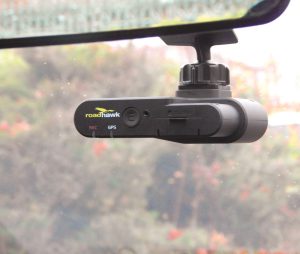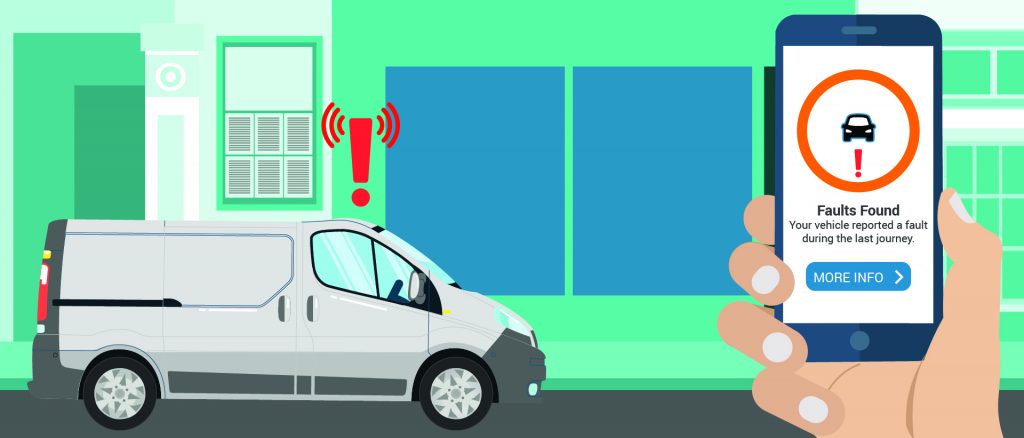Vehicle tracking is popular with national and regional companies – and affordable options now also exist for independent motor factors. This guide, from telematics specialist Trakm8, aims to help factors decide if vehicle tracking is right for their business.
There are now vehicle tracking solutions for automotive aftermarket companies of all shapes and sizes, from large fleets to owner-drivers. But what should you look for when selecting a supplier? Here are some of the key points to consider:
Pricing and payment
The key benefits that vehicle tracking can bring include increasing productivity and safety, while also cutting costs. Look for a provider that offers the best combination of savings for the business.
It is possible to buy a tracking smartphone app for just a few pounds per month, but they have very limited functionality. The next step up is a self-install tracking unit like Trakm8 Prime. Beyond that there are more connected systems that are typically hardwired into the vehicle. These provide much better analysis and insight for fleets, and are ideal for motor factors with 50 or more vehicles.
Some tracking providers allow customers to order and pay online; others insist first on a phone call or a visit from a sales rep. Payment plans vary from a lump sum to monthly or quarterly direct debits. Always seek a discount for paying up front; or for a contract longer than the standard 12 months.
Installation
For hardwired devices, be aware they will require vehicle downtime for installation, which is a hidden cost. Most providers will offer free installation as part of the package. However, a business might be liable for charges when it uninstalls the device at the end of the contract.
Self-install systems, such as Trakm8 Prime, simply plug into the van’s OBD port. This eliminates vehicle downtime for installation; and there are no removal charges at the end of the contract. Another benefit to self-install units is that they are transferable between vehicles, for example if newer vehicle models are brought in as replacements.
Boosting MPG
Whether it is hardwired or plug-n-play, a high quality tracking device will measure driving performance and often connect to the vehicle’s CAN Bus system. This means that it can identify and record events which impact on MPG, such as speeding, harsh acceleration, heavy braking, sharp cornering, and engine idling. During every journey, the tracker logs these events to create a unique score for each driver. The higher the score, the more fuel efficient the driver has been. Not all vehicle tracking solutions provide
performance monitoring or connect to the CAN Bus, so check in advance.
This type of ‘driver behaviour’ technology can boost fuel economy by up to 15% – and also reduces the risk of being involved in a road traffic incident. Some insurance brokers are now offering a discount on premiums if all vehicles are fitted with driver behaviour technology.
Additional features
Most vehicle tracking solutions include downloadable time sheets. The better ones also offer useful technology such as geofencing and business/private mileage management. Geo-fencing creates digital boundaries around a real-world geographic location – for example, sending an alert whenever a vehicle arrives at, and departs from, a customer’s site.
A business/private mileage management tool is a huge time-saver when it comes to P11D returns. With HMRC continuing to crack down on non-payment of taxes for personal use of company vehicles, it’s also hard evidence that provides protection from hefty fines.

One-stop shop
The best providers will be able to offer much more than just vehicle tracking, such as dash cams, to protect a business from fraudulent insurance claims.
It is also possible to combine telematics with route optimisation software. Optimisation enables much faster and more efficient transport planning. It also helps provide accurate ETAs to further improve customer service, increases vehicle utilisation to improve margins, and cuts total fleet mileage, saving money.
Other interlinked technologies include electronic proof of delivery (ePOD). This is highly affordable to implement, and integrates with back office software to provide a paperless delivery solution.
Buying all of these products from a single supplier helps to keep things simple – and leverages purchasing power.
Vehicle health
The best tracking systems can monitor vehicle fault codes and communicate issues before they result in a breakdown or non-start. This includes a battery health monitor, as well as alerts if it starts to go flat. Not many providers offer vehicle health alerts, so it is best to check in advance whether this is an option.
Try before you buy
The best way to find out if there is a business case for vehicle tracking is to try it out. Some providers will only offer an online demo to showcase their software. However, others, such as Trakm8 Prime, will offer a free trial, typically for one device, and lasting up to a month. This is a no-risk way to discover whether telematics is right for a company, and a great opportunity to try out the latest technology.









